Begonia × tuberhybrida, commonly known as tuberous begonia, belongs to the Begoniaceae family and has origins in Southern China and Japan. This beloved annual is a staple in gardens due to its versatility and minimal care requirements.
Tuberous begonias are prized for their stunning variety of blooms, ranging from single flowers with a simple row of petals to spectacular double blooms with multiple petal layers. They come in an array of shapes, sizes, and colors, making them a popular choice for both flowerbeds and containers.
However, it’s essential to note that the underground tubers of begonias are toxic to pets, including dogs, cats, and horses, so plant them with caution if you have animals nearby.
| Common name | Tuberhybrida Group, The Tuberosa Group |
| Botanical name | Begonia, Tuberous begonias, Begonia × tuberhybrida |
| Family | Begoniaceae |
| Genus | Begonia |
| Origin | Southern China, Japan |
| Life cycle | Annual |
| Plant type | Annual |
| Hardiness zone | 9, 10, 11 |
| Sunlight | Dappled Sunlight |
| Maintenance | High |
| Soil condition | High Organic Matter |
| Drainage | Well-Drained |
| Growth rate | Medium |
| Spacing | 12 in. – 3 ft. |
| Flowering period | Fall |
| Height | 1 ft. – 1 ft. 6 in. |
| Flower color | Gold, Yellow |
| Leaf color | Green |
| Fruit type | Capsule |
| Leaf benefit | Showy |
| Flower benefit | Showy |
| Uses | Container |
I. Appearance and Characteristics
Begonia is a genus of perennial flowering plants in the family Begoniaceae. The genus contains more than 2,000 different plant species. The Begonias are native to moist subtropical and tropical climates. Some species are commonly grown indoors as ornamental houseplants in cooler climates. In cooler climates some species are cultivated outside in summertime for their bright colorful flowers, which have sepals but no petals.
The genus name Begonia was coined by Charles Plumier, a French patron of botany, and adopted by Linnaeus in 1753, to honor Michel Begone, a former governor of the French colony of Saint-Domingue (now Haiti).
With 2,002 species, Begonia is one of the largest genera of flowering plants. The species are terrestrial (sometimes epiphytic) herbs or undershrubs, and occur in subtropical and tropical moist climates, in South and Central America, Africa, and southern Asia. Terrestrial species in the wild are commonly upright-stemmed, rhizomatous, or tuberous. The plants are monoecious, with unisexual male and female flowers occurring separately on the same plant; the male contains numerous stamens, and the female has a large inferior ovary and two to four branched or twisted stigmas. In most species, the fruit is a winged capsule containing numerous minute seeds, although baccate fruits are also known. The leaves, which are often large and variously marked or variegated, are usually asymmetric (unequal-sided).
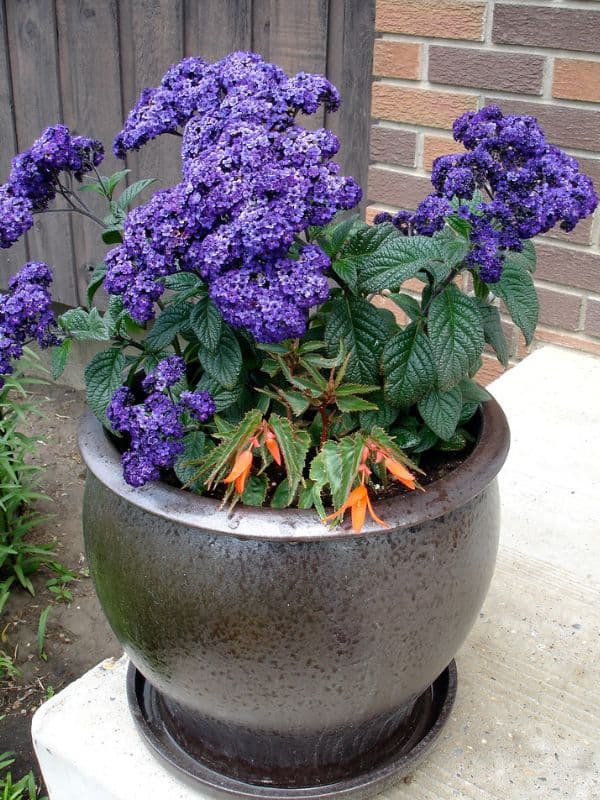
The different groups of begonias have different cultural requirements, but most species come from tropical regions, so they and their hybrids require warm temperatures. Most are forest understory plants and require bright shade; few will tolerate full sun, especially in warmer climates. In general, begonias require a well-drained growing medium that is neither constantly wet nor allowed to dry out completely.
Many begonias will grow and flower year-round except for tuberous begonias, which usually have a dormant period. During this dormant period, the tubers can be stored in a cool, dry place. Begonias of the semperflorens group (or wax begonias) are frequently grown as bedding plants outdoors. Wax begonias are very attractive, they adapt well when brought inside the house for overwintering and can live up to 4-5 years.
II. How to Grow and Care
Sunlight
Most begonia varieties like partial shade. Wax begonias can also handle full sun, especially if they have bronze foliage. Direct sunlight can put some varieties, such as cane and tuberous begonias, at risk of leaf scorch.
Temperature and Humidity
Due to their native environment, begonias thrive in warm, humid areas. Depending on whether you intend to keep begonias as annuals or perennials, these flowers grow outdoors in areas where temperatures stay above 60°F or indoors in climate-controlled rooms. Adding a humidifier indoors can help simulate the humid climate begonias want, making it easier to grow as a perennial.
Watering
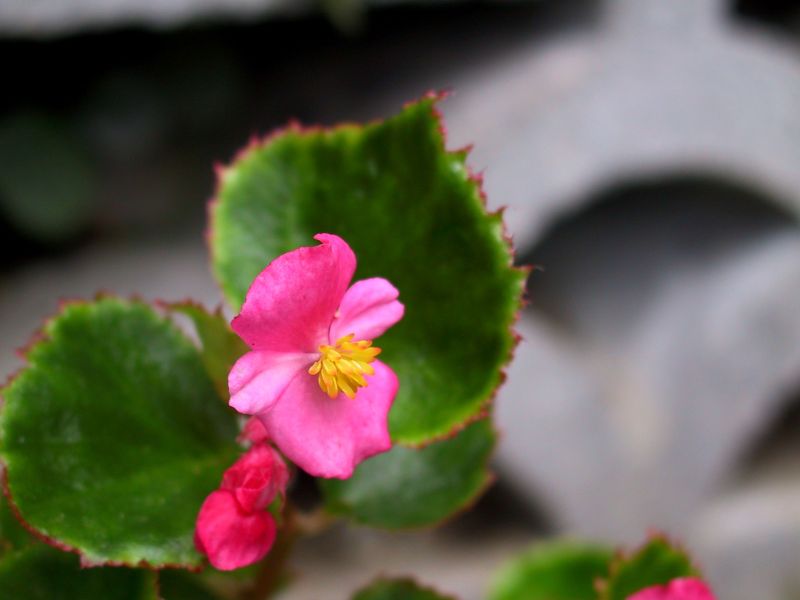
Keep the soil continuously damp but do not saturate the soil. If the first few inches of soil are dry, you can tell if your begonias need more water. Allow the soil to drain entirely before watering again because the wet or soggy ground can cause root rot. Also, water the plant base instead of the leaves because wet foliage causes fungal growth.
Soil
Begonias are relatively tolerable to any well-draining soil. Keep the soil damp, but do not oversaturate it because it can cause rot. If the flower bed or garden area does not contain soil rich in organic matter, supplement it with fertilizer. When growing begonias in containers or hanging baskets, use a soil mixture of leaf mold, garden loam, and coarse sand to help with soil moisture retention and draining. Potting mix can substitute leaf mold if unavailable.
Fertilizing
Begonias need fertilizer as these plants are heavy feeders. For best results, fertilize plants every two weeks with a balanced 10-10-10 or 20-20-20 slow-release blend. A 10-10-5 high in nitrogen used early in the season and an additional monthly fertilizer during the growing season can help begonias bloom and encourage new growth.
Pruning
Begonias need pruning to maintain healthy stems, which can get leggy if left untouched. Cut branches depending on your begonias’ growth, which will encourage new growth as stems emerge from the pinched point. Since begonia stems break easily, pruners or garden shears are not necessary. If you have a tuberous begonia, these plants will die back yearly, so digging and storing the tuber to replant the following year will help protect the roots. Move begonias grown from rhizomes indoors during the winter and regularly deadhead the plant to maintain its appearance and health, which will also prevent diseases.
Propagation
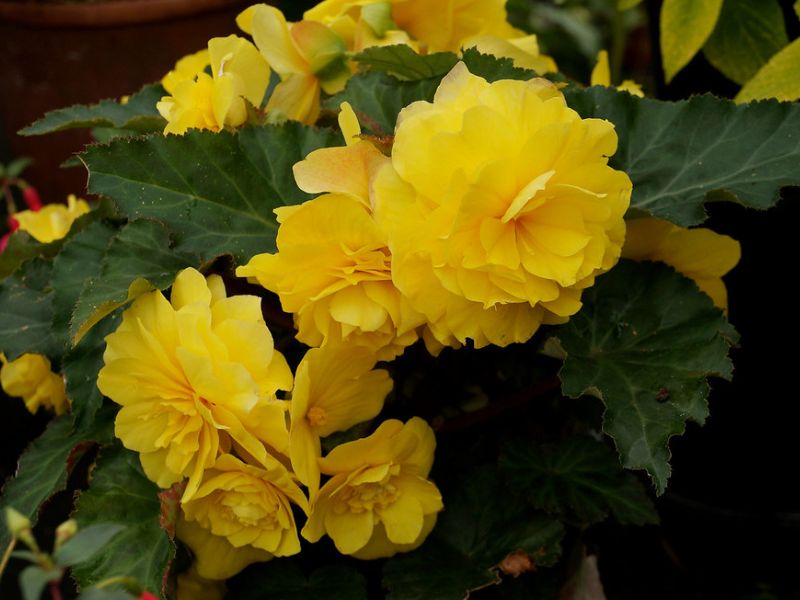
Begonias can grow as annuals or perennials, but when transplanting annuals indoors, these plants often suffer shock or grow leggy, so propagating new plants is an easy, effective solution. Begonias propagate differently depending on the varieties, but often using cuttings is the simplest way to achieve the best results. Here’s how to propagate begonias using stem or leaf cuttings:
- Start by cutting four-inch stems below a node from the begonia in spring using a clean knife or gardening scissors. Choose mature stems, but not ones that are fibrous or woody, with a few nodes to encourage new growth.
- Remove the lower leaves and dip each cut stem into a rooting hormone, if desired.
- Fill a container with well-draining soil and use your fingers or a pencil to create deep holes.
- Place the stem cuttings in each hole and gently pack the soil around them.
- To help retain moisture and promote humidity, place a plastic bag over the entire container without touching the stems or leaves. Allow air to circulate the plant.
- Keep the soil moist while the plants form roots, which takes about three to four weeks. Six to eight weeks from starting, transplant the plants to their final destination.
- If propagating with a large leaf, cut the mature leaf with a sharp knife where it meets the stem. Cut the end of the leaf into a point and follow the directions for stem cuttings.
How to Grow Begonias From Seed
There are several ways to start growing begonias. Sowing seeds in a starter tray, potted plants, or tubers are all options after the last frost. Growing begonias from seeds or fibrous roots can start indoors, but gauge when the last frost is expected in your area, so you are prepared to transplant them outdoors—start seeds usually three months prior.
- Use a seed starting tray and soil formula to sow the seeds in a shallow container. Place the tray in indirect sunlight to help germination.
- Begonias need warm weather, typically around 70°F to 75°F, to keep the soil moist and healthy.
- After about three weeks, seedlings should emerge.
- Continue providing natural light to seedlings or grow under fluorescent plant lights. Turn lights off at night to give seedlings a rest from the heat.
- When seedlings contain two leaves each, position the new growth, so it has room to spread.
- Add a fertilizer after one month of growth and transplant begonias to their final location after the last frost.
Potting and Repotting
Begonias grow very well in pots, indoors and outdoors. Outdoors, a terra cotta pot with good drainage works well. Indoor containers should also have excellent drainage. As the tubers or rhizomes grow, the begonia will occasionally need to be repotted to give it more room. Just gently lift the roots or tubers and place in a new pot with fresh potting soil, then water lightly.
Overwintering
Winter care depends on the variety of begonias, tuberous or fibrous. Tuberous begonias need little watering to maintain growth. Frequent watering will encourage new growth or rot the bulbs. Continue pruning weak sprouts if the growth continues, and suspend watering until the spring.
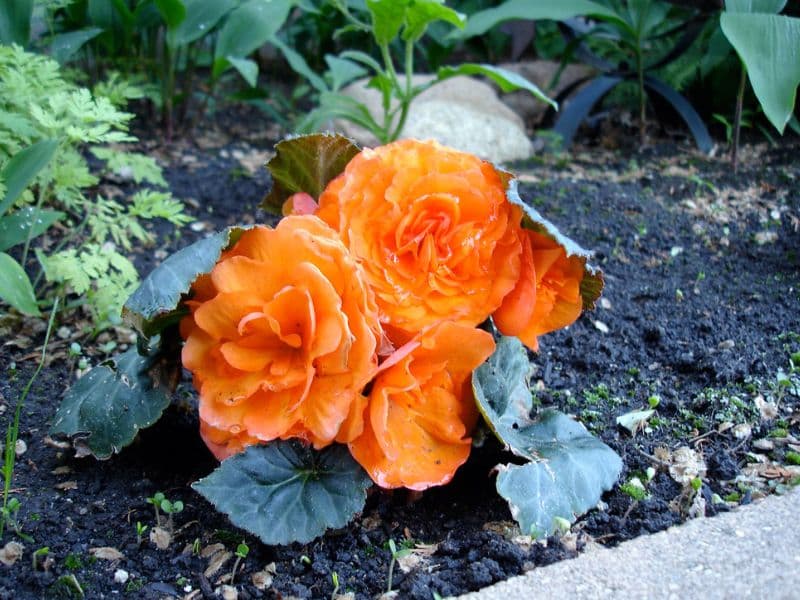
Remove moldy or rotten tubers. Fibrous or root-bound begonias act like other houseplants over the winter, meaning they need indirect sunlight, healthy and moist soil, and infrequent watering. Do not scorch the plants with too much direct light or heat. Wait until you are sure the final frost of the season has passed before moving plants outside—slowly introduce begonias to the spring temperatures so they can adjust.
Pests and Diseases
Common Pests and Plant Diseases
Generally speaking, begonias are not bothered by many pests or diseases. Root rot can occur as a result of overwatering, as can stem rot or powdery mildew. The main pests that can affect begonias include mealy bugs, spider mites, snails and slugs (the latter two enjoy munching the leaves and are easy to remove by hand).
Common Growing Problems
Flowers Wilting
If the flowers seem to be wilting or turning brown, your begonia may be getting a bit too much bright sunlight. Move to indirect light/partial shade.
Plant Not Blooming
If your begonia plant is not flowering, it could be due to too much or little water, extreme temperatures, or not enough light. Ensure optimum growing conditions to encourage bloom.
How to Get to Bloom
Begonias can bloom for up to six months in partial sun and ideal temperature conditions. Adding fertilizer every two weeks in pots and containers can help promote new growth—garden beds only need fertilizer every three to four weeks. Fertilizer or soil high in nutrients will help promote begonias to bloom, but use a slow-release formula to not pull energy from the flowers by creating more foliage and roots. Begonia stems are pliable, so use your fingers to remove spent blooms, deadheading the wilted or dead flowers to make room for a new showing.
III. Uses and Benefits
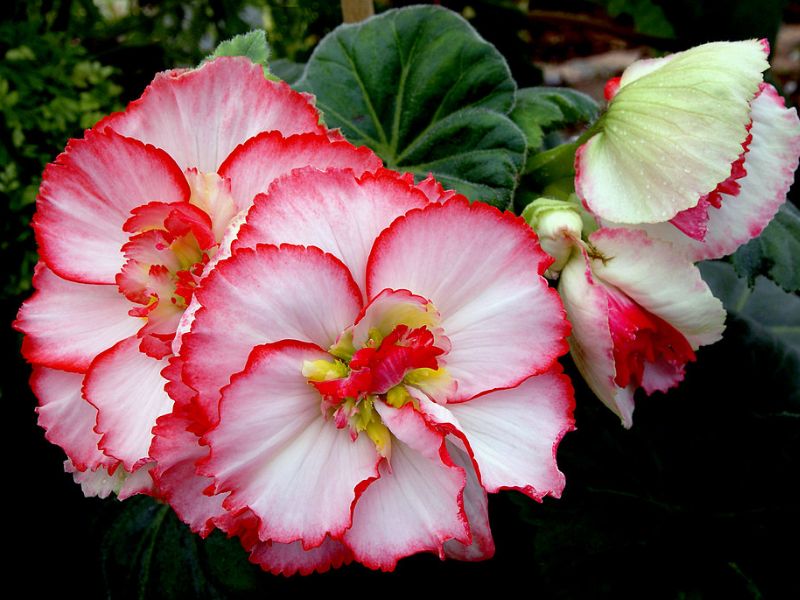
Valued for their foliage, rhizomatous begonias have thick stems (called rhizomes) that often grow along the ground. This type tends to form mounds and may feature very large leaves. (Rex begonias, one type of rhizomatous begonia, are grown for their vibrantly colored leaves, which come in an array of hues.) Since this variety likes cooler temperatures, they are often best grown as houseplants.
Find Where to Buy the Best Begonia (Begonia)

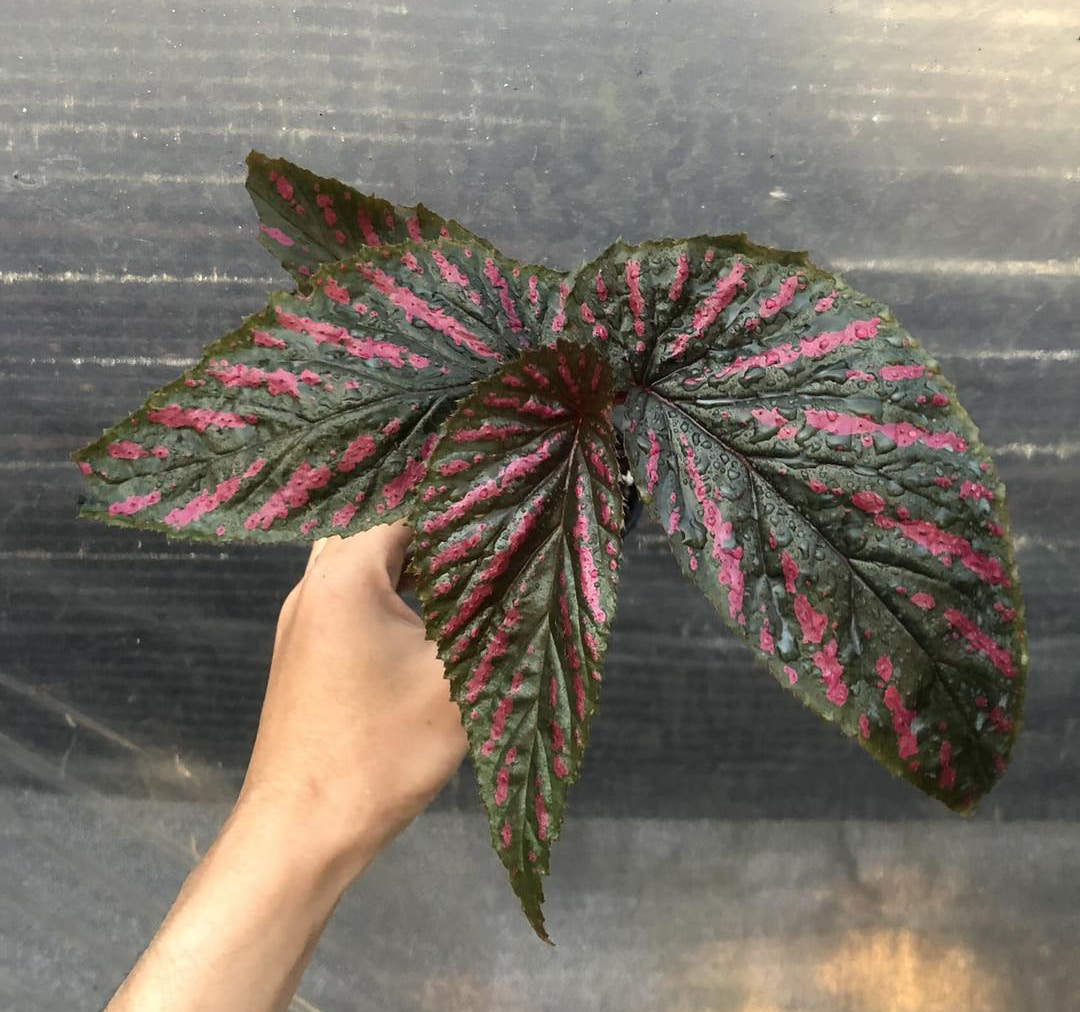

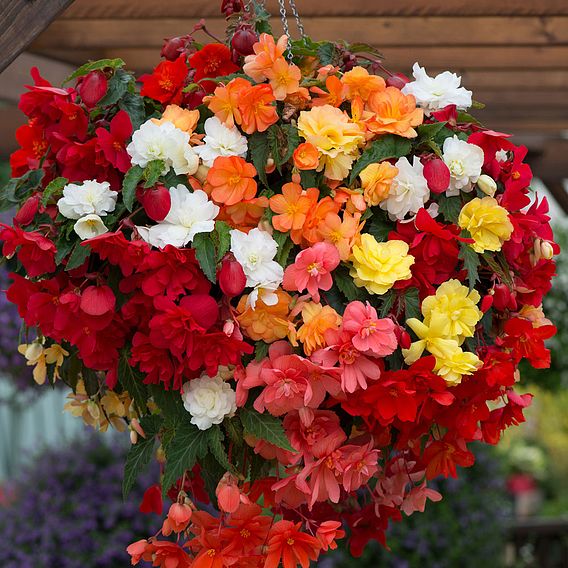














Leave a Reply